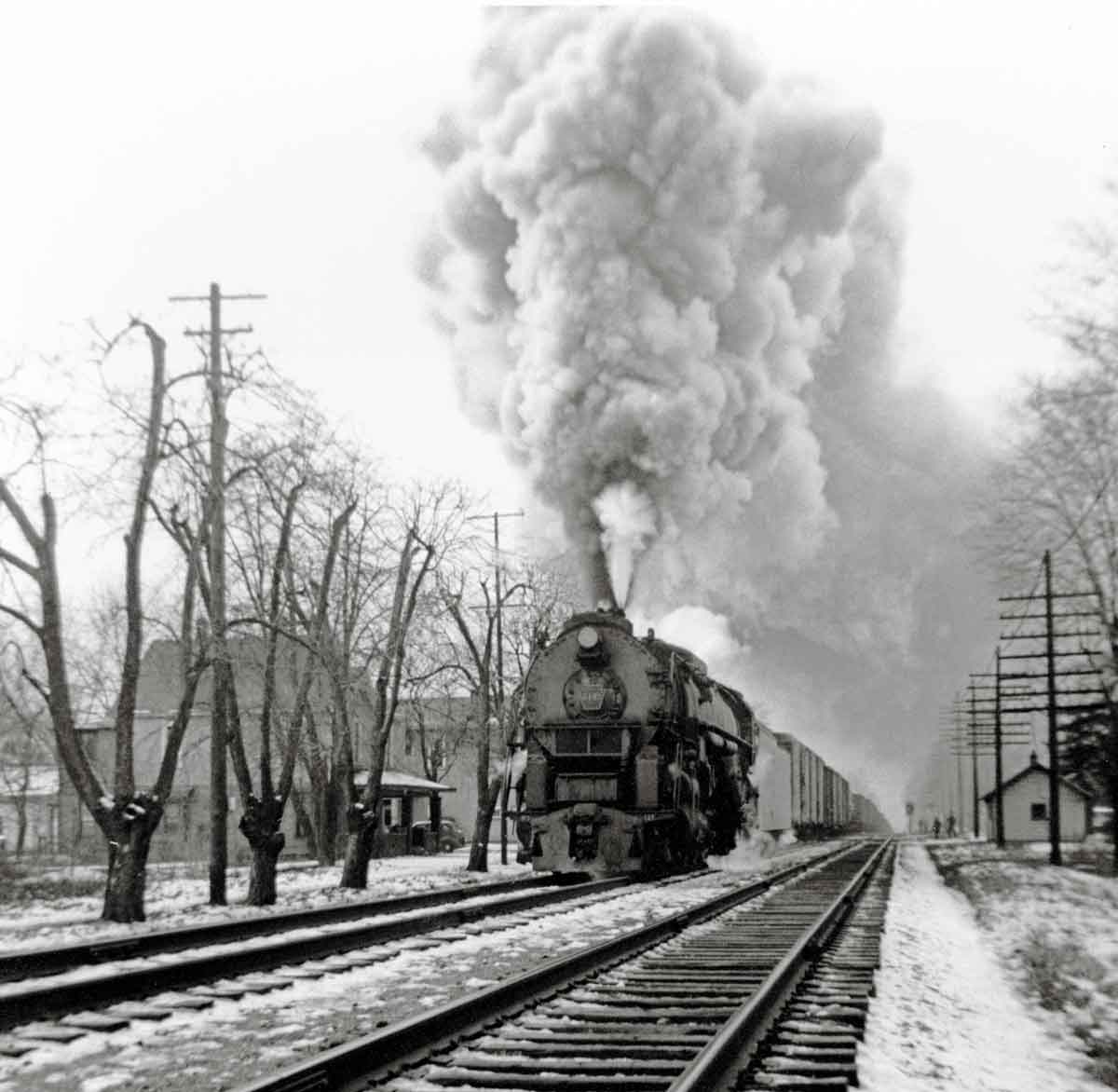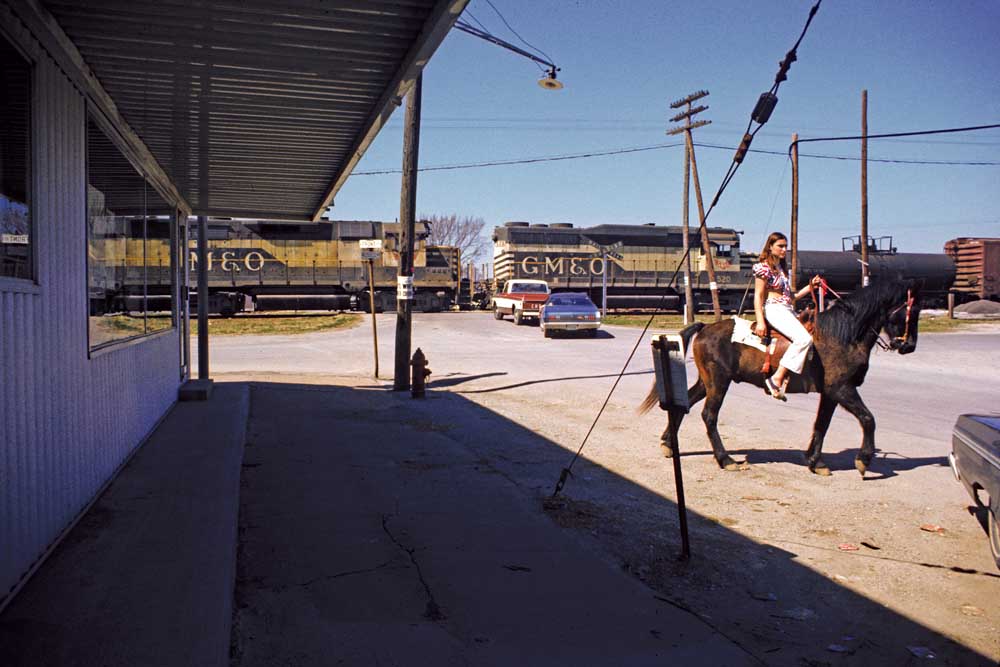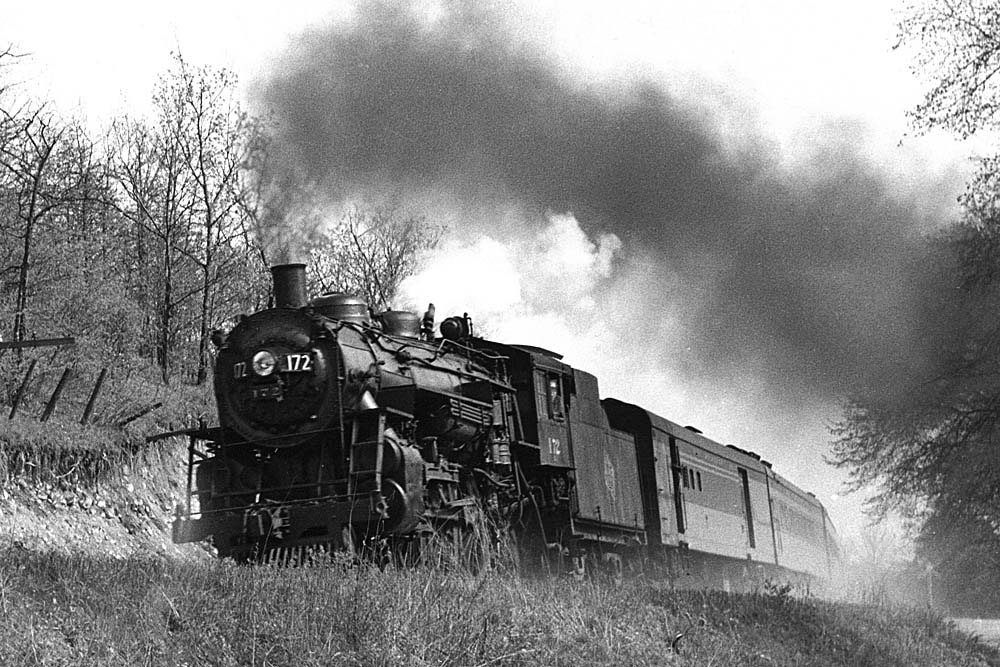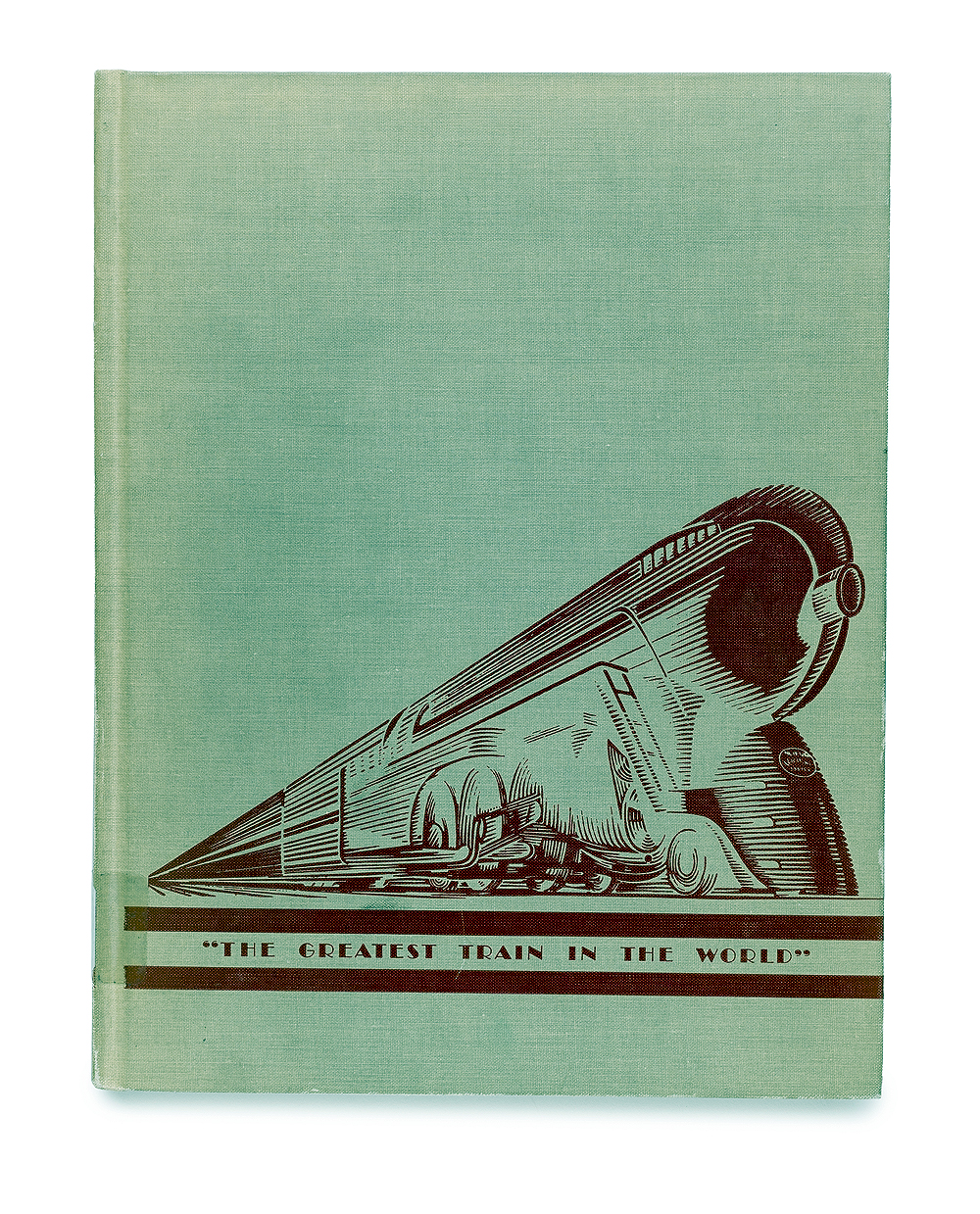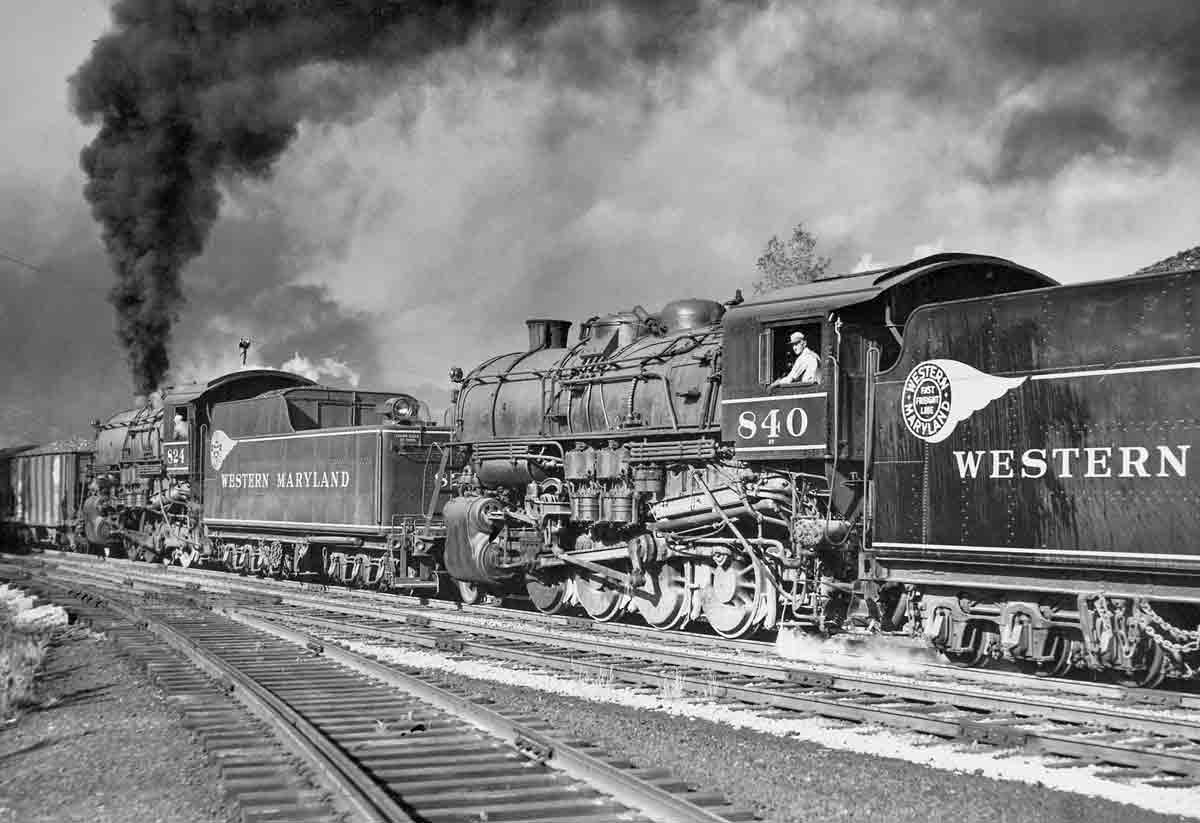The rest of the freights were diverted to the Pennsy’s Hawthorne Yard. The freight and passenger lines joined at Thorne Junction, about 2 miles east of Irvington. Hawthorne Yard was antiquated, even then. It was operated totally manually: Switchmen threw all the switches. And that was where the trouble began.
I had a great evening paper route that winter, bounded by the Pennsy. I carried a little notebook with the schedule of trains. During paper delivery hours, there were three: the eastbound Spirit of St. Louis, followed by the Jeffersonian 25 minutes later, and the westbound Mail and Express.
Those were the days of heavy Korean War traffic, and the PRR still ran a mixture of steam and diesel locomotives. When it was steam, we’d see K4s Pacifics, sometimes doubleheaded, and the occasional big thrill: a magnificent streamlined T1 4-4-4-4 duplex.
As I delivered my papers, I’d keep my ear cocked for approaching trains. I seldom missed being at trackside to watch a steam engine go by.
Those who think Indianapolis is flat would have been surprised by that line. The White River cuts a broad, gentle valley through Indianapolis, and it’s uphill east and west from the center of town. Standing at the Ritter Avenue crossing in Irvington and looking west, you would see a long grade down toward the center of the city. In the 3 miles west of Ritter, the track descended about 75 feet. The grade eased in the 1,000 feet or so eastward from Ritter to Audubon Road. Looking east from Audubon, you’d see a gentle roller-coaster effect, apparently cresting before reaching Thorne.
Delivering my papers one evening in the winter’s early dusk, I heard the distant sound of steam in the west. It was too early for one of the scheduled trains, and it sounded different. The chuffs were sharper, and came more slowly than usual. The pace reminded me of the chant of The Little Engine That Could: “I think I can, I think I can . . .” I detoured to the Ritter Avenue crossing to see what it was.
Slowly, a giant locomotive came up the grade, trailing a string of freight cars that disappeared into the distance. As it came closer, I could see it was a J1 2-10-4—the largest type of freight engine the Pennsylvania ran in Indianapolis. The only place I’d seen them before was at Hawthorne Yard.
The automatic crossing signals, timed for passenger trains, began blinking and the bells started ringing long before the train could arrive. The chuffs came farther and farther apart, sounding sharper and sharper. Motorists waiting at the crossing grew impatient, wondering what was taking so long.
About 300 feet from the crossing, “I . . . think . . . I . . . can . . . I . . . think . . . I . . . can” changed suddenly to “Waitaminutewaitaminutewaitaminute!” The driving wheels spun wildly and the stack blasted smoke into the sky. There was a brief spell of relative quiet as the engineer closed the throttle. Then he opened it again, and the drivers spun again. The train came to a halt.
There it sat. The hissing steam of the J1 mingled with the sound of the crossing bells, and the head brakeman came forward to flag traffic across the tracks. Eventually the conductor came walking up from the cabin car, and there was an intense consultation beside the locomotive. Then the conductor crossed the street to a railroad telephone box by the old crossing watchman’s tower. He unlocked it and engaged in a lengthy conversation.
The call ended; the conductor went back to the locomotive and climbed into the cab. The engineer released the brakes and put the J1 in reverse with a massive hiss, and the train rolled slowly backward down the hill, clanking and rattling. I went back to delivering my papers.
Things were quiet for a while. Then I heard the train approaching again. I headed back to the crossing.
Slowly the big engine blasted its way up the grade. Slowly . . . slowly . . . and more slowly. The crossing signals began to blink, the bells began to ring, drivers waited and waited for the train. And then, at about the same spot as before, the wheels spun again. The head brakeman flagged the cars across again. Someone from the engine crossed the street and opened the telephone box again. There was a brief conversation, and then everyone got back on the engine. The brakes were released, and the train backed slowly downhill.
It was now dark, and my remaining deliveries were late. At about the time I finished, I could hear the train coming again. I went back to the crossing.
From the sound of the exhaust, everything seemed the same. Once again, the signals began flashing and the bells started ringing. The exhausts came less than a heartbeat apart. But this time, the engine crawled past the spinning point, crossed the street, and kept panting heavily eastward.
I stood there entranced, counting the cars. The wheels clicked slowly over the joints in the rails. Clickety clack, clickety clack . . . 40, 50, 60, 70 cars . . . The pace seemed to increase very slightly.
Ninety-nine, 100, 101—and the cabin car. Coupled behind that caboose was a helper engine: the little 600 h.p. diesel switcher that was normally used to shuffle passenger cars at Union Station.
Then something happened that I’d only read about in stories on mountain railroading.
There was a brakeman on the rear platform of the caboose and another on the front platform of the diesel. And, wonder of wonders, they uncoupled on the fly! The brake hoses parted with a loud pop, just as the cabin car and helper crossed Ritter Avenue.
The little diesel slowed but kept going east; I headed home and was late for supper. Not long afterward, I heard the diesel returning on the westbound track; it must have used the crossover at Thorne. And soon came the Spirit of St. Louis and the Jeffersonian, running more than an hour late.
Several more freight trains passed through Irvington overnight and the next day. I discovered the reason the next evening while reading the paper as I made my deliveries. The switchmen at Hawthorne Yard had gone on strike, shutting down operations. Freight trains were being routed straight through the city, on the passenger line.
We were treated to freight trains for about a week, but the first train up the hill was the only one that stalled. It was the only view of mountain railroading I’d ever see in Indianapolis!
First published in Spring 2008 Classic Trains magazine.
Learn more about railroad history by signing up for the Classic Trains e-mail newsletter. It’s a free monthly e-mail devoted to the golden years of railroading.
The big engine that couldn’t
| Last updated on November 3, 2020
A Pennsylvania 2-10-4’s uphill struggle was a sight to behold for an Indianapolis paperboy





